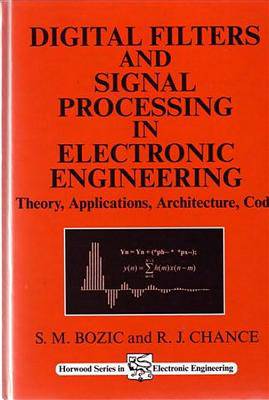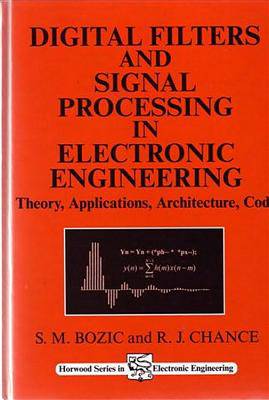
- Retrait gratuit dans votre magasin Club
- 7.000.000 titres dans notre catalogue
- Payer en toute sécurité
- Toujours un magasin près de chez vous
- Retrait gratuit dans votre magasin Club
- 7.000.000 titres dans notre catalogue
- Payer en toute sécurité
- Toujours un magasin près de chez vous
Digital Filters and Signal Processing in Electronic Engineering
Theory, Applications, Architecture, Code
S M Bozic, R J Chance
82,45 €
+ 164 points
Description
From industrial and teaching experience the authors provide a blend of theory and practice of digital signal processing (DSP) for advanced undergraduate and post-graduate engineers reading electronics. This fast-moving, developing area is driven by the information technology revolution. It is a source book in research and development for embedded system design engineers, designers in real-time computing, and applied mathematicians who apph DSP techniques in telecommunications, aerospace (control systems), satellite communications, instrumentation, and medical technology (ultrasound and magnetic resonance imaging). The book is particularly useful at the hardware end of DSP, with its emphasis on practical I)SP devices and the integration of basic processes with appropriate software. It is unique to find in one volume the implementation of the equations as algorithms, not only in \IATLAB but right up to a working DSP-based scheme. Other relevant architectural features include number representations, multiply-accumulate, special addressing modes, zero overhead iteration schemes. and single and multiple nlicroprocessors which will allow the readers to compare and understand both current processors and future DSP developments. Fundamental signal processing procedures are introduced and developed: also convolution. correlation, the Discrete Fourier Transform and its fast computation algorithms. Then follo finite impulse response (FIR) filters, infinite impulse response (IlR) filters, multirate filters, adaptive filters, and topics from communication and control. I)esign examples are given in all of these cases, taken through an algorithm testing stage using MATLAB. The design of the latter. using C language models, is explained together with the experimental results of real time integer implementations. Academic prerequisites are first and second year university mathematics, an introductor knowledge of circuit theor 'and microprocessors. and C Language.
Spécifications
Parties prenantes
- Auteur(s) :
- Editeur:
Contenu
- Nombre de pages :
- 235
- Langue:
- Anglais
- Collection :
Caractéristiques
- EAN:
- 9781898563587
- Date de parution :
- 01-10-98
- Format:
- Livre relié
- Format numérique:
- Ongenaaid / garenloos gebonden
- Dimensions :
- 174 mm x 247 mm
- Poids :
- 566 g







